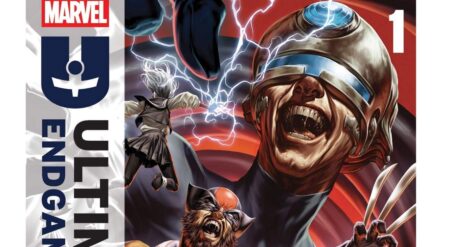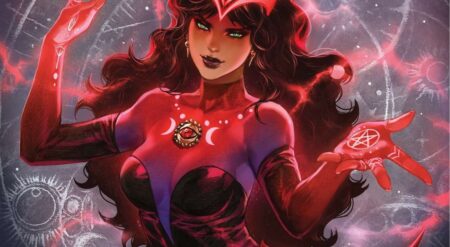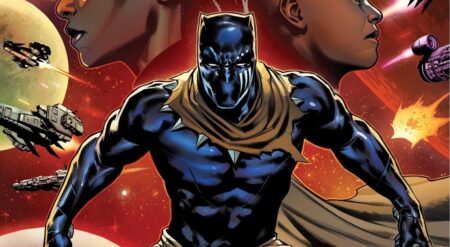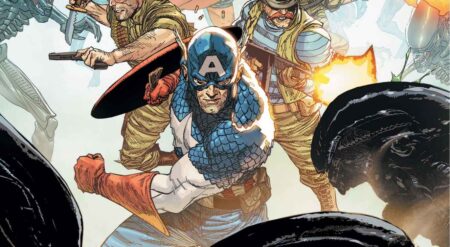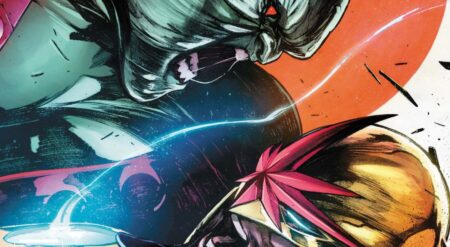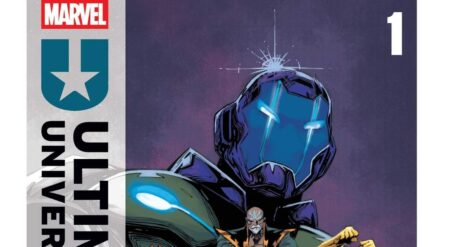Captain America Issue 1 (2025) is published by Marvel Comics and written by Chip Zdarsky, with art by Valerio Schiti, colors by Frank Martin, and letters by Joe Caramagna.
Captain America is freshly out of the ice and trying to settle back into a new world. However, as he’s enlisted in a secret mission, another young man faces a similar story to his own.
The first issue of this new series had an interesting relationship with time and history. When a Captain America comic takes place is important, especially in an opening chapter with a split structure. Captain America is only a week out of the ice, and yet a flashback story in Captain America Issue 1 begins with the collapse of the World Trade Centre.
This leads me to believe that Zdarsky is retconning the origin of Captain America‘s emergence in the modern day, like Extremis and the Iron Man movie did for Tony Stark. This complicates things. Because there are Captain America storylines set around 9/11, and even long before that. The assumption of the retcon might be wrong, but it’s how the script looks.
The premise of this first arc is a secret origin, exploring what happens in the early days of Captain America‘s new life. The initial action is energetic and exciting, demonstrating imperfections in a perceived perfect man. The structure bounces between Cap and this other man, someone who is going through a similar origin story to Steve Rogers.
It’s intriguing to see how this unfolds, as it essentially relives the origin story of Steve in an inventive way. Each time the plot moves back to Cap, he’s doing something different or talking to someone new. It keeps the book interesting and reveals the exposition through intelligent methods.
What’s fascinating about Captain America Issue 1 (2025) is that it occurs so early in the timeline. It changes everything, from how characters react to him to how he acts in combat. When hunting down an armed suspect, Cap is rusty. He makes mistakes and stumbles, something we’ve rarely seen him do before. This is because he’s been out of action for so long. The conversations he has with other superheroes, who are also in the early stages of their careers, are beautifully written by Zdarsky, whose dialogue is consistently incredible.
There’s an early chat with Iron Man, but it’s the long talk with Mr Fantastic that is absolutely excellent. It’s rare to see these two talk, especially when they are both so young. To see Red Richards, a leader in the superhero community, be so in awe and respectful of someone he looks up to is touching and revealing. There’s also a terrific talk about a famous villain, as Captain America gains intel on them for the first time. Cap has often been humble, but it’s engrossing to see him be somewhat vulnerable and raw.
The art is fantastic. Many of the costumes and designs are incredible, courtesy of Schiti. The characters have their classic costumes, but they’ve also been updated to fit a modern era. It’s an early Iron Man armor, and even Mr Fantastic looks younger. There’s a gorgeous simplicity to Schiti’s designs. Some Captain America costumes have been overly detailed, featuring buckles and clips on his cowl to transform it into a more military-style helmet. This version is clean and cool.
The action is phenomenal. The sense of movement is blistering, with a fast-moving motorbike chase to kick off the excitement. You can see when Cap falters, clattering into the ground, but also retaining conversation as Captain America Issue 1 (2025) continues. There are many instances of Steve looking uneasy and naive, struggling to take on the early examples of Marvel’s (costumed heroes and powers).
The colors are stunning. The most noticeable shade is the blue on Captain America‘s costume. It’s a very dark blue, instead of a more vibrant, lighter tone. This fits the surroundings, making Cap look like he’s part of the city instead of standing out in it. Many of the other characters also have darker tones, modernizing the colors instead of leaning into brighter costumes that would better fit the ’60s and ’70s. The lettering is both comfortable and formal, making it easy to read.
Captain America Issue 1 (2025) reimagines Cap’s rebirth. Superhero origins often need updating to fit the era, as comics are constantly evolving and moving forward, spanning multiple decades. However, it’s particularly awkward with someone like Captain America, as numerous stories depict him in various conflicts and pivotal moments in time, especially the events of 9/11. It makes it confusing to know how this story fits within wider continuity, and whether those previous stories are considered canon.
But ultimately, the crucial thing about a comic story is whether it excels in itself, not just fitting into a universe. And at that, the creative team has succeeded with Captain America Issue 1. Zdarsky’s script is exceptional, and it’s so fascinating to get these early interactions with younger versions of the characters. And Schiti’s is impeccable at odds, beginning with a terrible image that is so iconic and memorable, etched into the memories of so many. It demonstrates a boldness and bravery on the part of the creators in telling a plot that addresses a hostile world.
Captain America Issue 1 (2025) is available where comics are sold.


